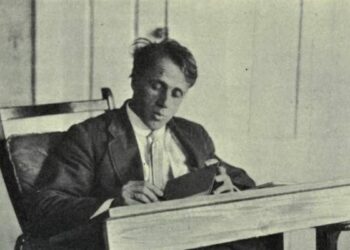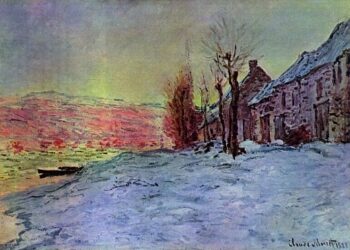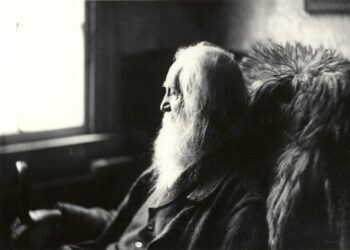Table of Contents
ToggleIntroduction
At an Inn Summary And Themes By Thomas Hardy Thomas Hardy, renowned for his evocative poetry and novels, often explores themes of love, longing, fate, and the complexities of human relationships. In his poem At an Inn, Hardy reflects on a poignant moment from his life, weaving a narrative of unfulfilled love and the disconnection between expectation and reality. The poem captures the fleeting nature of emotional connections and the bittersweet recognition of lost opportunities.
At an Inn offers a unique lens into Hardy’s emotional world, where personal experiences are imbued with universal significance. Through his characteristic blend of lyrical beauty and philosophical introspection, Hardy delves into the intricacies of human emotion, painting a picture of love that is both deeply personal and profoundly relatable.
This analysis includes a detailed summary of the poem, exploration of its central themes, and answers to frequently asked questions to provide a comprehensive understanding of At an Inn.
Summary of “At an Inn”
At an Inn recounts an episode in Hardy’s life when he and a woman, with whom he shared a strong emotional bond, visited an inn together. The poem reflects on the assumptions made by the inn’s staff and the contrast between outward appearances and internal realities.
Read more
Stanza-by-Stanza Summary
- Stanza 1
The poem begins with Hardy and his companion arriving at the inn. The staff assumes they are lovers, projecting an idealized image of romantic bliss onto them. Hardy acknowledges the warmth of this reception, noting how the staff’s perception heightens the atmosphere. - Stanza 2
Hardy describes the couple’s behavior, marked by their restrained and formal interaction. Despite the staff’s assumption of romantic intimacy, there is a palpable distance between them. The discrepancy between perception and reality becomes evident, as their connection lacks the passion others imagine. - Stanza 3
Hardy reflects on the nature of their relationship. Although they share a deep emotional bond, societal norms and personal circumstances prevent them from acting on their feelings. This unspoken tension creates an undercurrent of sadness and longing. - Stanza 4
The poet shifts to a philosophical reflection, pondering the forces that have shaped their situation. He questions whether fate or divine intervention has kept them apart, introducing themes of destiny and human powerlessness. - Stanza 5
Hardy laments the loss of what could have been, envisioning an alternate reality where their love flourishes without restriction. This vision is tinged with both hope and despair, as he acknowledges the impossibility of changing the past. - Stanza 6
The poem concludes with a somber acknowledgment of their separation. Hardy notes that the love others assumed to exist between them was never realized. The final lines underscore the transient nature of human connections and the enduring regret of lost possibilities.

Themes in “At an Inn”
1. Unfulfilled Love
At its core, At an Inn is a meditation on unfulfilled love. Hardy explores the emotional complexities of a relationship that could not come to fruition, highlighting the tension between desire and societal constraints. This theme resonates with universal experiences of longing and regret.
Read more
2. The Gap Between Appearance and Reality
The poem emphasizes the disparity between how the couple is perceived by others and the reality of their relationship. This theme underscores the limitations of outward appearances and the complexity of human emotions.
3. Fate and Powerlessness
Hardy reflects on the role of fate in shaping human relationships. He grapples with the idea that external forces—whether divine or circumstantial—can thwart even the deepest connections, leaving individuals powerless.
4. The Transience of Human Connections
The fleeting nature of relationships is a recurring theme in Hardy’s work. In At an Inn, he captures the impermanence of emotional bonds, contrasting the staff’s assumption of lasting love with the ephemeral reality of their connection.
5. Regret and Nostalgia
Hardy’s tone is imbued with regret as he reflects on what might have been. This theme is intertwined with nostalgia, as the poet looks back on the moment with a mixture of longing and sorrow.
6. Societal Constraints on Love
The poem highlights the impact of societal expectations and norms on personal relationships. Hardy portrays a love that is constrained by external factors, emphasizing the tension between individual desires and collective pressures.

Conclusion
Thomas Hardy’s At an Inn is a poignant exploration of love, fate, and human connection. Through its vivid imagery, introspective tone, and universal themes, the poem captures the complexities of a relationship defined by longing and restraint. Hardy’s reflections on unfulfilled love and the forces that shape human relationships resonate across time, offering a timeless meditation on the intricacies of the human heart.
Read more
1. What inspired Thomas Hardy to write At an Inn?
The poem is believed to be inspired by a personal experience Hardy had with Florence Henniker, a married woman with whom he shared a close emotional bond. Their relationship, though deep, remained platonic due to societal norms and personal circumstances.
2. How does Hardy use imagery in the poem?
Hardy employs vivid imagery to create a contrast between the warm, romantic atmosphere of the inn and the restrained reality of the couple’s interaction. This juxtaposition highlights the themes of unfulfilled love and the gap between appearance and reality.
3. What role does fate play in the poem?
Fate is a central theme in At an Inn. Hardy questions whether external forces or divine intervention have prevented the fulfillment of their love. This reflection underscores his sense of powerlessness and the inevitability of their separation.
4. How does the poem explore societal constraints on love?
The relationship depicted in the poem is shaped by societal norms and expectations, which prevent the couple from expressing their feelings openly. This theme reflects the broader tension between individual desires and collective pressures.
5. What is the significance of the inn in the poem?
The inn serves as both a physical setting and a symbolic space. It represents a moment of possibility and connection, but also the limitations imposed by societal norms and personal circumstances. The inn’s staff, who project romantic ideals onto the couple, further highlights the theme of appearance versus reality.
6. How does the poem reflect Hardy’s broader themes?
At an Inn encapsulates many of Hardy’s recurring themes, including unfulfilled love, fate, and the complexities of human relationships. The poem’s introspective tone and exploration of emotional depth are characteristic of Hardy’s work.
7. What is the tone of the poem?
The tone of At an Inn is reflective and melancholic, as Hardy looks back on the moment with a mixture of regret, longing, and philosophical introspection. This tone underscores the emotional weight of the poem’s themes.

















